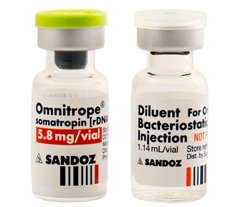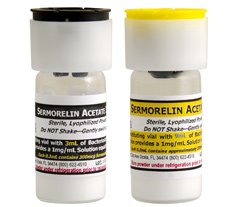Testosterone Treatment for Male Hypogonadism

Male hypogonadism is diagnosed when the body is not producing enough testosterone for its needs. That is the simplified explanation of this condition, but further clarification will be provided in the next section about “what is hypogonadism.”
This report will focus on explaining this condition as well as the use of testosterone treatment for male hypogonadism.
A man dealing with this change in his body will often undergo a number of changes in his life, as well. He may lose his desire for sex while also seeing his performance in the erection area decrease. Brain function may slow down, with problems arising in the areas of learning capabilities, memory, and focus. His once happy mood may turn sour or depressed. Muscle and bone decline can inhibit his physical performance and health. Weight gain, anemia, and loss of drive can all further his reduction in the quality of life that is experienced.
During hypogonadism, testosterone levels can drop significantly. There is often no way of raising them without the use of doctor-prescribed testosterone replacement therapy of some sort. There are different methods of increasing testosterone levels, and they will be further explained in section 3 of this report.
The use of testosterone replacement and hypogonadism treatment has been around for more than 7 decades. Significant research has been done in this field to allow for the successful treatment of men suffering from Low T, as the condition is often referred.
What is Hypogonadism?
Hypogonadism is a condition in males that can be identified in either of the following two ways:
- A decrease in sperm production in the testes
- A decrease in testosterone production in the testes
There are also two forms of hypogonadism:
- Primary hypogonadism- resulting from an issue with the testes
- Secondary hypogonadism – resulting from an issue with the pituitary gland or hypothalamus
The determination of hypogonadism and testosterone levels is done via blood analysis that will measure the levels of both free and total testosterone in the bloodstream. Total testosterone takes into account that which is bound up and not available for use while in transport to the various tissues with testosterone receptors.
When diagnosing hypogonadism, testosterone deficiency is carefully measured by the doctor, and physical examination and symptoms of the patient are also taken into account.
Primary hypogonadism is diagnosed when at least one of the following: sperm count and/or serum testosterone concentration are below normal, and serum FSH and/or LH concentrations are tested as above normal through blood analysis.
Secondary hypogonadism is diagnosed when sperm count and/or serum testosterone concentration are below normal, and serum FSH and/or LH are measured at either a low reading or normal.
How is Hypogonadism Treated?
The goal of treatment for hypogonadism is to increase the level of testosterone in the body well into the normal range. Since this can typically be considered between 300 and 800 ng/dL, many hormone replacement therapy specialists now believe that research has shown that aiming for 550 ng/dL provides the optimum benefits.
Hypogonadism testosterone treatment can be accomplished in a number of ways:
- Testosterone injections:
- Testosterone cypionate
- Testosterone enanthate
- Testosterone propionate
Of the three listed above, testosterone cypionate is the most prescribed as it is the longest lasting option, requiring the fewest injections. Testosterone cypionate also has an excellent absorption rate into the bloodstream, produces the least side effects, and is the most affordable method of treating hypogonadism.
- Transdermal Patch
The use of transdermal testosterone patches allows for a man to adhere one patch to his body every 24 hours. Although convenient to use, the patch can easily fall off and is an expensive option. Unlike with the injectable testosterone where it is all readily absorbed into the bloodstream, there is no way of knowing how much testosterone is getting through the skin and into the bloodstream.
- Topical Testosterone Gel
Hypogonadism testosterone replacement in the form of a gel is also expensive, can cause cross-contamination in others, and runs the same risks as with the patch regarding absorption into the bloodstream.
- Oral Tablets
Buccal tablets containing testosterone adhere to the gums and are replaced twice a day. There are many unpleasant side effects, including changes in taste, dry mouth, irritation, pain, stomach irritation, and risk of swallowing is a concern.
- Implantable Pellets
Implantable testosterone pellets are not widely recommended as they require a surgical procedure, are difficult to remove if needed, may exit the body on their own, and can cause bleeding and fibrosis at the implantation site.
Where to Get Testosterone Treatment for Male Hypogonadism
When the time comes to determine where to get hypogonadism testosterone replacement therapy, the primary concern should be to find a doctor who specializes in hormone replacement for adults. These physicians have the experience and knowledge needed to safely raise hormone levels to their ideal states.
Here at Kingsberg Medical, our HRT specialists have spent years helping both men and women achieve balance in their bodies through hormone replacement. We work with adults over thirty years of age throughout the US, offering confidential consultations free of charge. We do not work with bodybuilders, athletes, or anyone looking for hormone treatments to enhance their performance or appearance. For individuals with hormone deficiencies, HRT will bring those benefits, as well as many other health and well-being results.
To learn more about hypogonadism testosterone therapy, please contact Kingsberg Medical for a complimentary consultation.
Brian Leeber



















